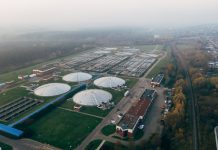A recently released report projected a decrease in reliance on imported natural gas, including liquefied natural gas (LNG), to around forty-five percent by the fiscal year 2026, attributing this shift to a surge in local production. An analysis by Care Ratings indicates that the dependency on imported LNG stood at fifty-three percent in FY21, but has gradually reduced over the past three years, with expectations to stabilize around the forty-five percent mark by FY26.
The rise in domestic natural gas output has played a significant role in diminishing reliance on imported LNG. In the last three years, approximately thirty million metric standard cubic meters per day (MMSCMD) of new domestic natural gas production has been introduced, and an additional fifteen MMSCMD is projected to come online in the upcoming fiscal year alone.
Despite consistent growth in natural gas consumption until FY20, the pandemic and increased LNG prices due to geopolitical tensions led to a decline in demand from FY21 to FY23. The government plans to increase natural gas’s contribution to its primary energy mix from the current six percent to fifteen percent by 2030. The strategic initiative focuses on key sectors such as fertilizers, city gas distribution, power generation, refineries, and petrochemicals.
Although historical reliance on imports due to declining domestic production has been a challenge, optimistic developments are on the horizon. As reported by abpLIVE, significant growth in domestic output is expected to increase in FY24 and FY25. Regulatory interventions, including aligning domestic pricing with imported gas prices and enhancing LNG capacity, are crucial for facilitating this transition towards greater reliance on natural gas.
































